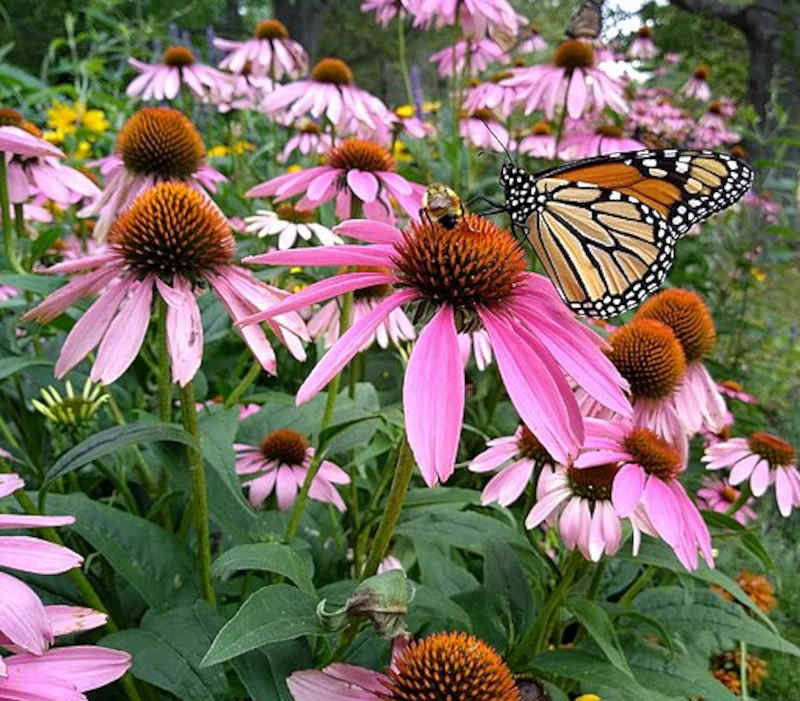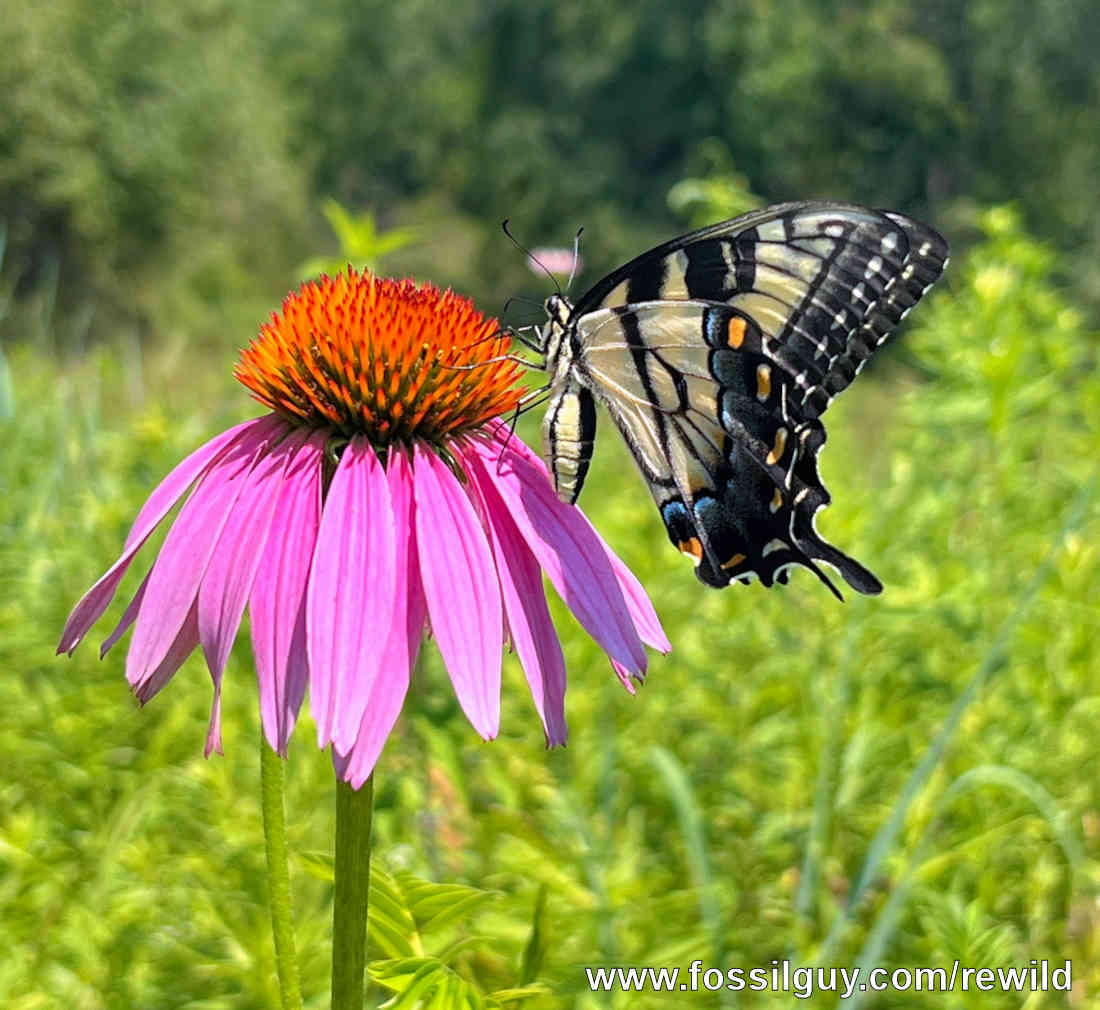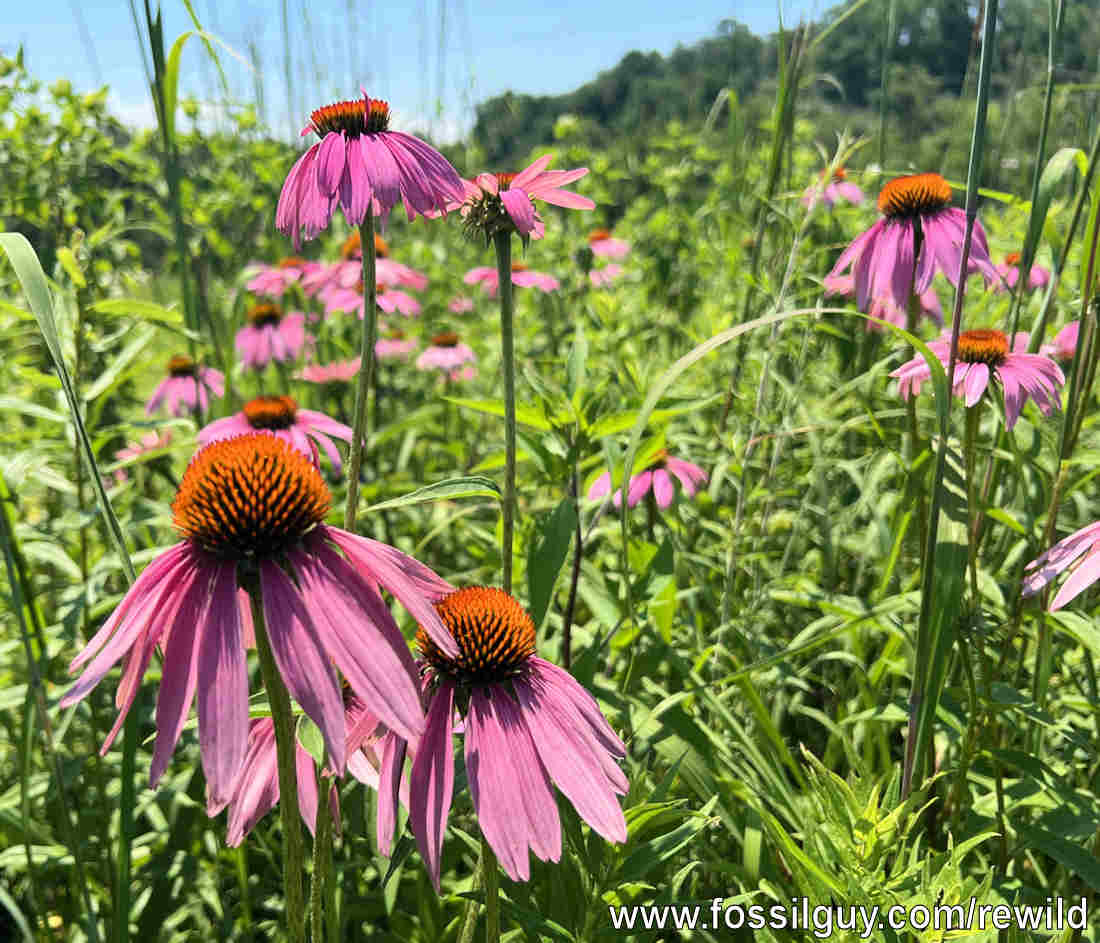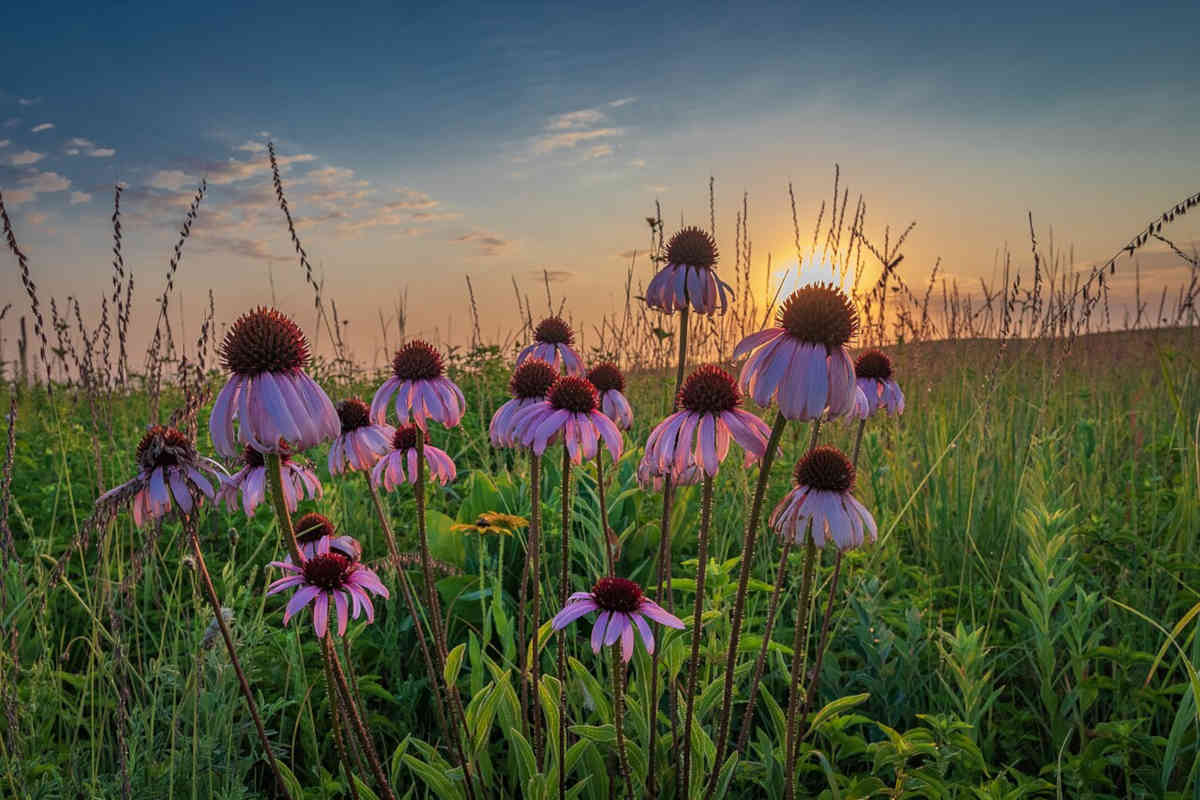Coneflower Guide
Quick Facts

Purple Coneflower with a Monarch feeding on its nectar
Name: Purple Coneflower (Echinacea purpurea)
Type: Herbaceous perennial (Forbe)
Size: 2-5 feet tall
Native Range: Central and Eastern United States
Bloom Time: Mid to late summer
Flower Color: Purple-pink petals with orange-brown cone
Sunlight: Full sun to partial shade
Soil: Well-drained, tolerates drought once established
Wildlife Value: Attracts bees, butterflies, birds, and hosts several species of moths and butterflies
Habit: Clump-forming habit that naturally grows in prairies, open meadows, and woodland edges
Fun Fact: The name "Echinacea" comes from the Greek word for "hedgehog," referring to the flower's spiky central cone.
Replace the following Non-native flowers with Coneflower:
Shasta Daisy and Oxeye Daisy
Native Coneflowers: A Guide to Purple Coneflower (Echinacea purpurea)

Purple coneflower with an adultTiger Swallowtail feeding
Introduction to Purple Coneflower
Purple Coneflower (Echinacea purpurea) is a beloved native wildflower known for its iconic daisy-like purple petals and prominent spiny cone. Its striking appearance, resilience, and ecological value make it a favorite in pollinator gardens, prairies, and naturalized landscapes.
Native to the central and eastern United States, Purple Coneflower thrives in sunny conditions and adapts well to a variety of soils. Once established, it's drought-tolerant and low-maintenance, making it ideal for wildlife-friendly gardens or meadow plantings.
Wildlife and Ecological Importance
Purple coneflowers are rich in nectar and pollen, making them a vital summer resource for native bees, butterflies, and beneficial insects. Their long bloom time and prominent flower heads provide easy access for pollinators, helping support diverse insect populations in both wild and cultivated landscapes.
Coneflowers also serve as host plants for several Lepidoptera species (butterflies and moths). Among them are the Silvery Checkerspot (Chlosyne nycteis) and the Wavy-lined Emerald (Synchlora aerata). These moth and butterfly caterpillars feed on the foliage, connecting the plant to the food web not just through nectar but also as a larval host. Supporting Lepidoptera helps bolster local biodiversity and increases the presence of pollinators and insect-eating birds.
In late summer and fall, the dried seedheads of coneflowers become an important food source for songbirds—especially American goldfinches, which can often be seen in numbers perched on the spent cones, plucking out seeds. For this reason, it’s best not to deadhead your coneflowers, as their seedheads provide vital nourishment when natural food sources are dwindling
Growth Cycle and Spread
Purple Coneflower grows from a fibrous root system and forms clumps over time. It emerges in late spring, flowers in mid to late summer, and produces prominent seedheads by early fall. These seedheads provide food for birds and natural reseeding for future plants.
Though it spreads slowly through seeds, it’s not aggressive. Allowing plants to self-seed helps expand your pollinator garden naturally. You can also divide mature clumps every few years to propagate and maintain plant vigor.
Why Plant Coneflower?
Planting native Purple Coneflowers offers a wide range of ecological benefits. These hardy, drought-tolerant perennials are not only low-maintenance and beautiful—with vibrant, long-lasting blooms through the summer—but they also play a critical role in supporting local wildlife. Coneflowers attract a wide array of pollinators, and is a host plant for around 8-10 species of moths and butterfly caterpillars. As the seasons shift, their seed-filled cones become a vital food source for goldfinches and other birds, especially during the fall and winter months when other resources are scarce.
Unlike ornamental non-native daisies and similar exotics, native coneflowers are deeply integrated into the local ecosystem. They have evolved alongside the insects and birds that rely on them, forming complex and beneficial relationships that non-native plants simply can't replicate. Choosing to plant native species like Purple Coneflower helps restore habitat, promote biodiversity, and strengthen the food web right in your own backyard.

A native meadow with Purple Coneflower







